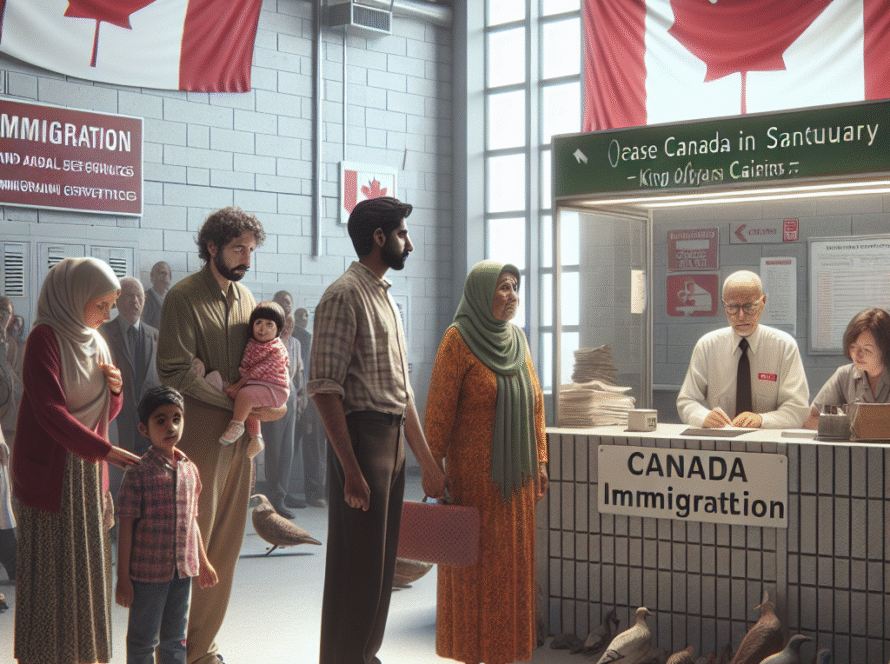Canada Bans Border Flagpoling for Work and Study Permits

Canada Ends Flagpoling: A New Era for Work and Study Permit Applications
On December 23, 2024, the Canadian government implemented a significant policy change by officially ending the practice of flagpoling for work and study permit applicants. This decision is part of a broader initiative aimed at optimizing border resources, reducing wait times, and enhancing the overall immigration process for foreign nationals looking to work or study in Canada.
Understanding Flagpoling
Flagpoling is the practice where temporary residents exit Canada—typically crossing into the United States or nearby territories—only to re-enter in order to access immigration services at Canadian ports of entry. While this method was a popular workaround for expediting applications, it strained the resources of the Canadian Border Services Agency (CBSA), which reported handling over 69,300 flagpoling cases from April 2023 to March 2024. This high volume of cases not only diverted critical resources from enforcement activities but also caused delays for everyday travelers.
The Shift to Online Applications
With the new policy in place, all applications for work and study permits must now be submitted through Immigration, Refugees and Citizenship Canada’s (IRCC) online system. There are some exceptions for certain groups, including:
- U.S. Citizens and Lawful Permanent Residents: They can continue to access services at ports of entry.
- Free Trade Agreement Professionals: Workers under treaties like NAFTA/USMCA have specific exemptions.
- Spouses of Trade Agreement Professionals: Limited cases allow them to seek permits at the border.
- International Truck Drivers: Those with valid work permits may still process their applications at ports of entry.
- Pre-Booked Appointments: Applicants with scheduled appointments remain eligible for border processing.
Benefits of the Policy Change
While some may perceive the end of flagpoling as an inconvenience, the policy brings several advantages:
-
Faster Online Processing: Transitioning to an online application system is expected to create a more streamlined and predictable experience for applicants.
-
Reduced Border Congestion: With flagpoling eliminated, CBSA officers can focus on enforcement and facilitate smoother cross-border travel for all.
- Fairer System: The online submission process levels the playing field, ensuring all applicants adhere to the same standards.
This strategic shift underscores Canada’s commitment to enhancing the efficiency and security of its immigration system, while also ensuring fairness for all applicants.
How to Apply for Work or Study Permits
Applicants can now navigate the process more effectively by following these steps:
-
Create an Account on IRCC’s Website: Prepare necessary documentation, including proof of employment or admission.
-
Complete Your Application Online: Fill out the required forms and upload supporting documents.
-
Pay the Application Fees: Utilize IRCC’s secure payment portal to submit fees.
-
Track Your Application Status: Stay informed through the IRCC online portal.
- Await Approval Before Traveling: Do not attempt to process at the border unless you meet the exemption criteria.
A Pro-Immigration Stance
Despite the discontinuation of flagpoling, Canada remains a welcoming destination for immigrants. This policy change is part of a broader strategy to improve the efficiency and fairness of immigration processes. By harnessing digital technologies and focusing border resources on enforcement, Canada is reinforcing its reputation as an immigration-friendly nation.
In conclusion, while the end of flagpoling may require adjustments for applicants, it ultimately serves to strengthen Canada’s immigration framework. This forward-thinking move reflects a commitment to streamlining processes and enhancing fairness, positioning Canada as a leader in global immigration policy.
Stay informed and prepared as Canada continues to evolve its immigration landscape.



